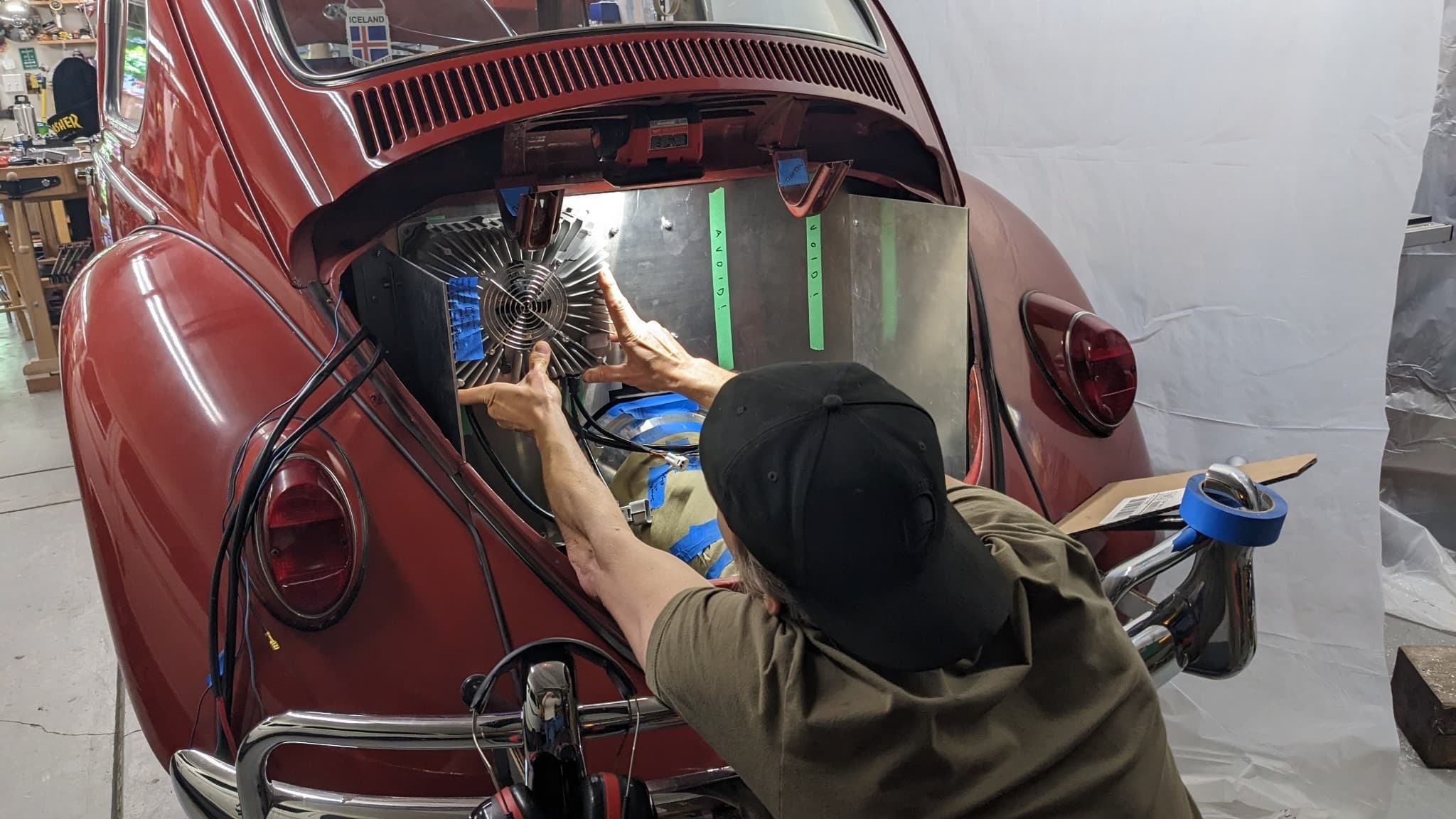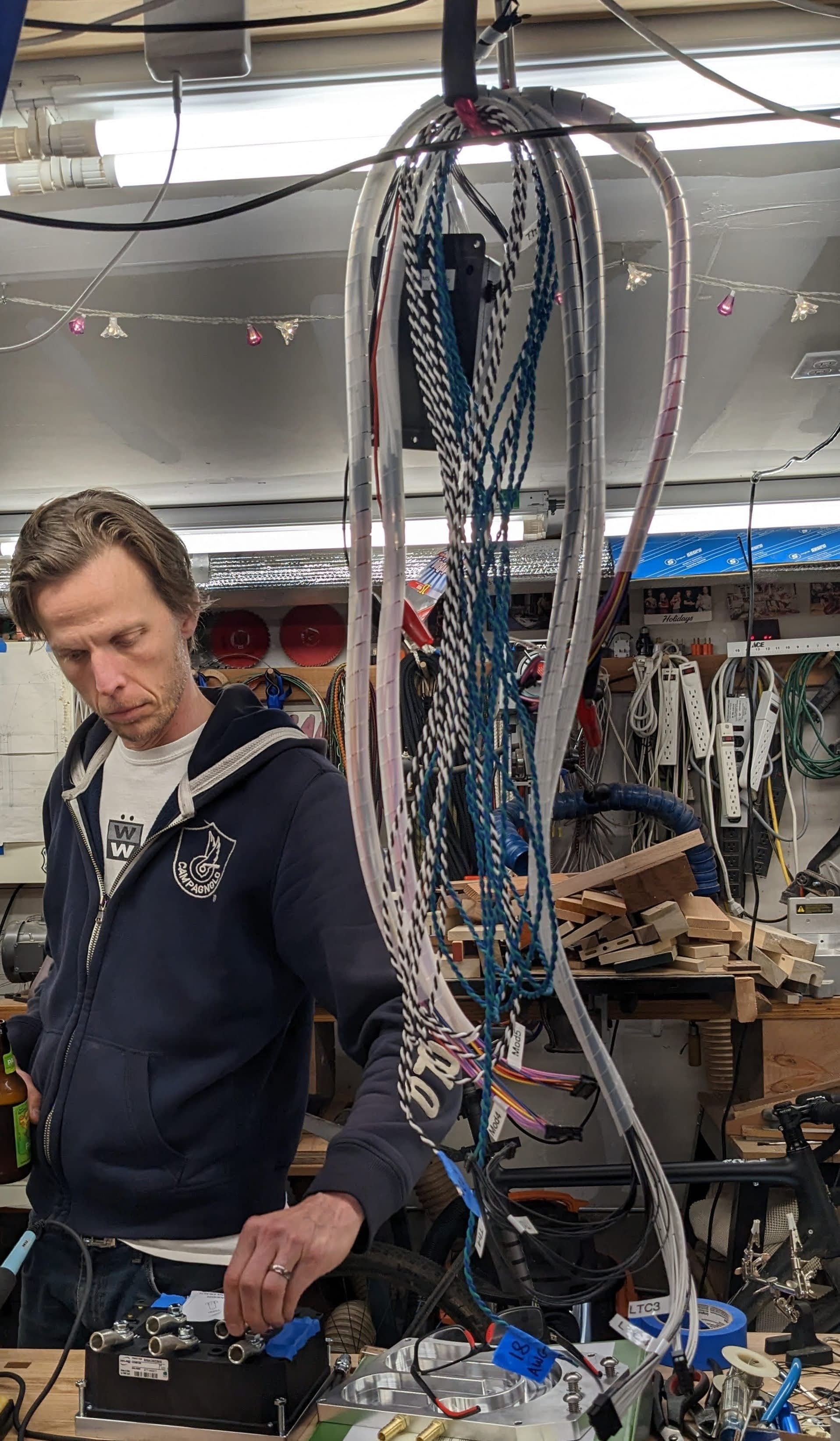Can transforming a gas car to an electric one create a forever car?
In theory, an electric car can last an eternity — it's up to manufacturers to lead the way.

When Thor and Hannah Denmark drive their 1965 Volkswagen Beetle around San Francisco, they typically get triple-takes from passersby.
It's rare, after all, to see an old Bug in such mint condition.
But when people look more closely, they may notice a more salient fact: the Bug doesn’t have a tailpipe and hardly makes any noise.
Because…it’s electric!
It’s hard not to marvel at how a car born the same year as Charlie Sheen quickly barrels up the city’s famously vertical hills.
“They realize the Bug isn’t going chug-chug-chug but zoom,” says Thor, a software engineer who electrified the car just over a year ago. The Denmarks bought the car in 2002 and drove it as a gas car for 20 years.
But Thor is a devout tinkerer. In his spare time, he strapped an electric motor onto the cargo bike that the Denmarks were using to transport their three children to school. “That was a game-changer,” says Hannah, an interior designer. “I still use that bike.” Then Thor electrified a 1962 Lambretta scooter. “It looks cool, and it’s fun to drive,” he says.
The electrification inspiration
The Denmark family lives down the street from Otherlab, a research and development incubator housed in an old organ factory. Otherlab was started by Saul Griffith, Rewiring America’s co-founder. Thor found out Griffith and his crew of inventors were also interested in electrifying vehicles.
“The idea that we can all make a difference with climate change by electrifying the cars and appliances we use really pushed us over the edge,” says Thor.
A year later, the Bug was electrified. At first, Thor — whose father had a Beetle, and who grew up helping him fix it on the streets of New York City — thought he was going to have to devise a complete DIY solution for converting the Bug. But then he saw that several companies were popping up with kits to help people electrify their cars. “They sent you about 70 percent of what you needed, and then you fill in the other 30 percent with a lot of reading, figuring, and experimenting,” says Thor.
Finding DIY electrification resources
Thor found a company called EV West, in San Diego, whose owner, Michael Bream, not only sold him the conversion kit (they make kits for Porsches, VWs, and Kharman Ghias for about $20,000), but answered his questions as he went along (the company now does a conversion clinic for DIYers). He particularly liked EV West’s upcycling habit of buying wrecked Teslas and salvaging the batteries to reanimate old electrics like modern Dr. Frankensteins.
While EV West was a pioneer in conversion kits, many more new DIY conversion companies have opened recently, including Flash Drive Motors in Austin, Texas; Legacy EV in Gilbert, Arizona; AmpRevolt in Lancaster, Pennsylvania; Foremost EV in Mesa, Arizona; Ampere EV in Dawsonville, Georgia; Hypercraft US in Provo, Utah.

A steep learning curve
Despite the fact that an EV has only a few dozen moving parts, compared with thousands of parts in a gas-powered engine, the conversion was still a time-consuming slog, taking Thor about a year.
“It would’ve taken three weeks if I didn’t have three kids and a job,” he says.
“He would go to sleep reading manuals on the electrical components he was putting in. He had to design and lay out where all the wires were going, since there’s no map or diagram.”
“But it was fun. I’m ready to do another,” says Thor.
An electric car that could live forever
Now that the Bug is electrified, though, there’s no reason it can’t run forever, like the vintage cars that have been kept alive for generations in Cuba. “As long as you have a welder and metal, you can keep repairing rust rot,” Thor says. “After that, it’s mainly just the batteries.”
“Electric motors famously last for up to a century, so unless you're drag racing it every Saturday night — which I’m not opposed to — your electric motor will probably last close to a million miles,” says Griffith.
Batteries are key to creating an eternal EV
Eventually, batteries in an EV, like all batteries, will lose their charge. The Denmarks’ Bug has five used Tesla batteries, each holding a charge for about 20 miles. But Thor says that when they stop holding a good charge, the batteries swapped out of the car can be used in a house, where they’ll still work as back-up energy.
So EVs have the capability of lasting, well, forever. Already, one Tesla, a 2014 Model S, has been driven more than 1.2 million miles.
That’s the theory, at least. “The best EV car manufacturers would put themselves out of business,” says Hannah.
And therein lies the problem.

Planned obsolescence makes EVs the iPhones of electrics
“EVs are like iPhones,” says Thor. Even though there aren’t big differences between models, Apple has hooked the public on upgrading every few years.
It's planned obsolescence,” says Thor, and the same idea has been baked into EVs.
“Tesla is the same, not supporting features in older models. Car companies don’t want to build a forever car because while it would be good for the planet, it would screw their profits,” says Thor.
Griffith is in favor of EVs that are simple enough — like the original Beetle design — that they can be easily repaired some day.
But that isn’t the case with many EVs on the market now. “I have an EV sitting in my garage that is seven software updates behind schedule and you can't drive it,” he says.
To keep electric cars alive, we not only need to be able to swap out the batteries, but also need to be able to do minor repairs. For “right to repair” to take hold, EVs have to be simpler to fix, says Griffith.
Right to repair would mean longer-lasting cars
“An electric car needs an on switch, a throttle to go forward, brakes to stop, and some lights,” says Griffith. “So we could make them that simple.”
For those who are willing to invest the time and money it takes to electrify a gas car, the benefits are legion.
One one hand there’s the DIY cool factor of refurbishing a chunk of metal, and giving it new life.
Then there's the satisfaction of having diverted a piece of junk from the landfill. And who in this era of high prices and so much waste, can't get on board with that?
Hey friends, there are lots of ways to go electric. Get the download on electric cars, heat pumps, lawn tools, and so much more in our Go Electric guide.


